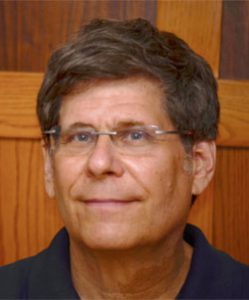Mark Seidenberg has been fighting the battle for years. Decades, actually.

Seidenberg, Vilas Research Professor and Donald O. Hebb Professor of Psychology, has spent the bulk of his illustrious career working to transform the way that children in the United States are taught to read. Illiteracy remains a widespread problem: According to the nonprofit organization ProLiteracy, some 43 million adult Americans lack reading and writing skills above a third-grade level.
“Why are our literacy levels so low here?” asks Seidenberg. “Why is there a huge percentage of kids whose reading skills are poor and whom the schools are not reaching?”
These are questions Seidenberg has spent a lot of time exploring. There are several answers, but to Seidenberg, the biggest is a longstanding disconnect between scientific research on the ways children acquire language and reading skills—research to which Seidenberg has made significant contributions—and how children are taught to read in the classroom.
Seidenberg describes the model that’s dominated U.S. education for the past several decades as a “romantic fable.” The central idea was that if teachers create a stimulating environment with interesting activities and texts, a child will be motivated to learn to read, gradually building reading skills that transfer from one book to the next.
“The research says it doesn’t work that way,” says Seidenberg. “It takes instruction to help children understand how print works and how it represents language. They don’t just ‘pick it up’.”
In 2017, Seidenberg summarized the state of reading research in “Language at the Speed of Sight: How We Read, Why So Many Can’t and What Can Be Done About It,” a book that laid out his arguments for a different way of teaching.
Seidenberg argues that the systems in the brain connected to mastering spoken language and literacy are intertwined, and a child’s ability to read is critically dependent on their knowledge of spoken language.
“When kids are learning to read, the thing that has the biggest impact on them figuring out and learning about print, which is what reading involves, is what do you know about language?” says Seidenberg. “Do you know the words? Do you know the sentence structures? Do you know what the topics are that we’re talking about?”
The notion that kids will just “figure it out” ignores the fact that children’s home environments and experience with spoken language vary wildly. How often are children spoken to and encouraged to talk? How complex is the language the child is hearing? This creates serious ongoing challenges for teachers. Meanwhile, the materials in standardized reading curricula are often insensitive to the language background of the students they’re designed to teach. In an 2021 article in American Educator, Seidenberg pointed out that for many students, the language or dialect they learn in the home and community is different from the one used in school, which complicates learning to read.
“The world these materials are resolutely oriented towards is this idealized, middle-class kid,” says Seidenberg. “They don’t take into account these things we’ve studied, like how differences in the way that people talk influence their ability to learn from reading.”
As an example, Seidenberg points to math word problems, which often incorporate language and scenarios more familiar to white, middle-class children. (“A health club charges a one-time initiation fee and a monthly fee. John paid 100 dollars for 2 months of membership. However, Peter paid 200 for 6 months of membership. How much will Sylvia pay for 1 year of membership?”)
Seidenberg has spent much of the last five years advocating to bring teaching methods in line with the scientific research, speaking to reading advocacy groups and at teacher and educator conventions. He knows he has raised awareness of the issue, but while several states have passed legislation ordering that public school reading curricula be overhauled and updated (Wisconsin is not among them), progress remains slow. Large textbook publishing companies, for instance, can be loathe to make major changes to their products.
Seidenberg plans to retire from teaching at the end of the 2022-23 academic year, and as he enters the twilight of his career, he remains deeply concerned about the sizable U.S. literacy gap. The COVID-19 pandemic, which forced children out of classrooms and disrupted their learning, seems to have only exacerbated the problem—after leveling out in the decade preceding the pandemic, literacy levels in the U.S have fallen. The impact of the pandemic will be felt for years to come, Seidenberg says.
“You begin to think if we don’t do something about this now, being literate will become an elite skill,” says Seidenberg. “A certain number of people will be highly literate because they are needed at the top. Everyone else will be stuck at the level needed to post on Twitter or play video games.”